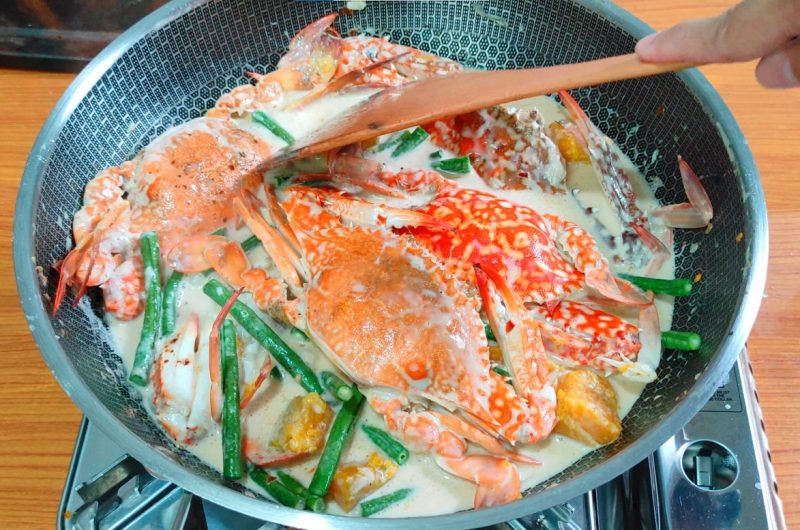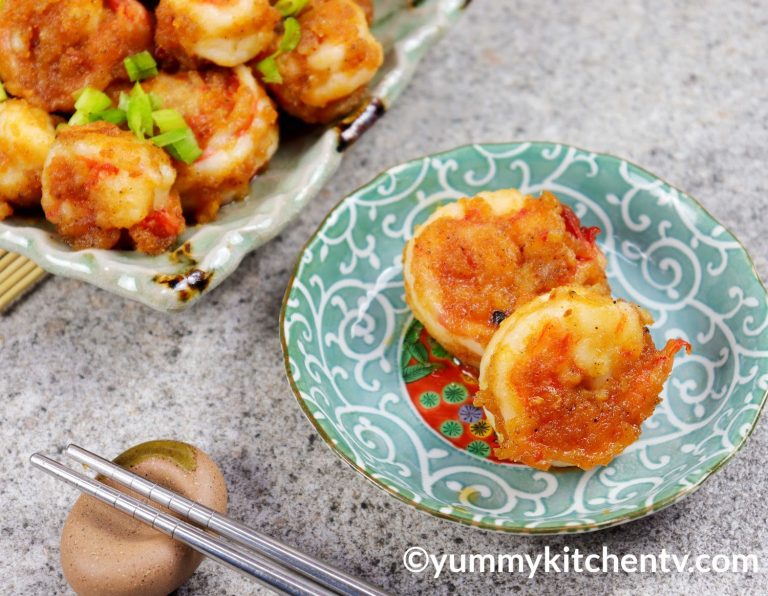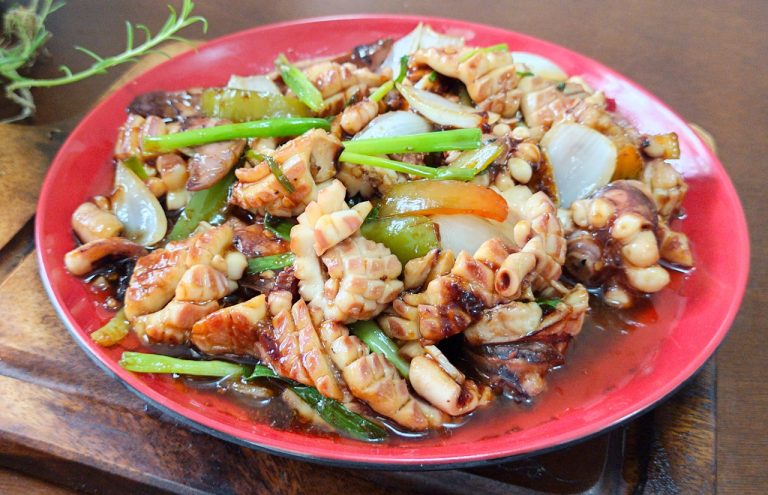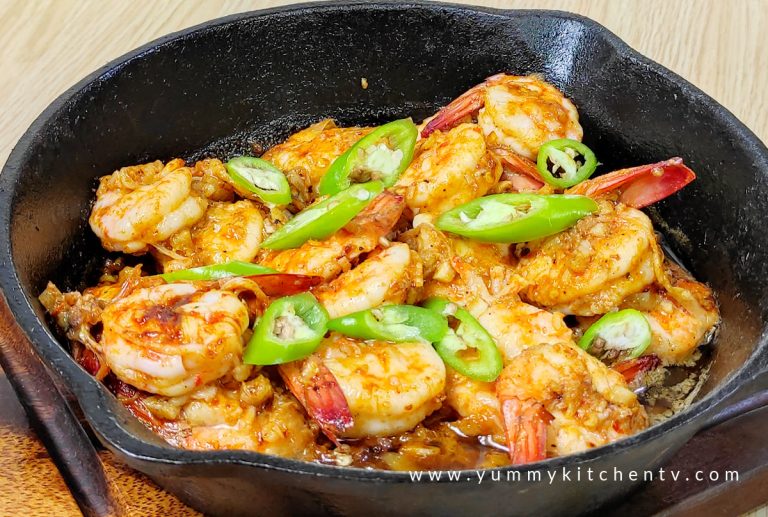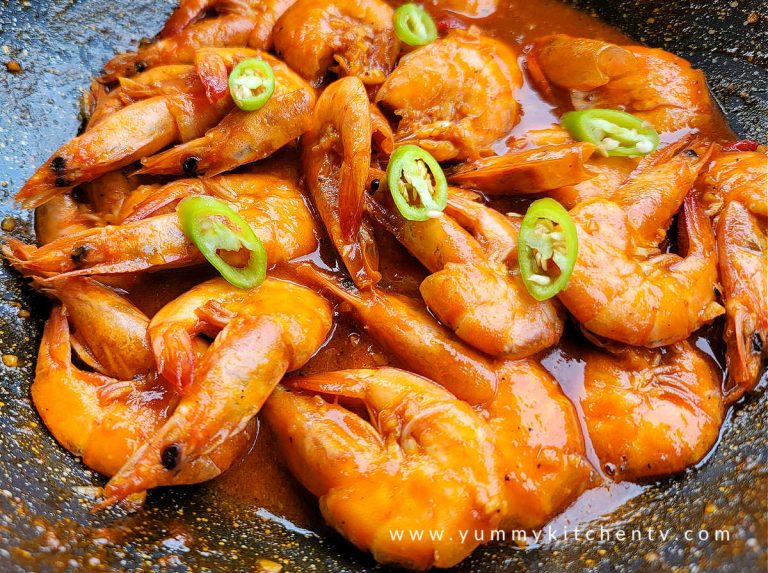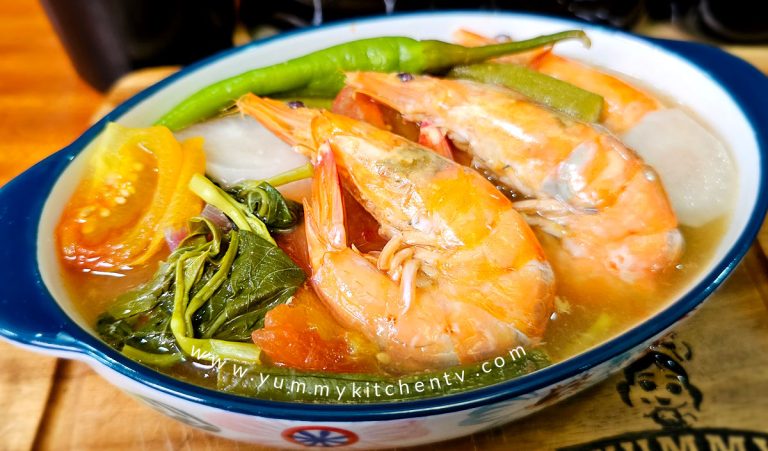Ginataang Alimasag
Ginataang alimasag is a popular Filipino crab dish where large crabs, string beans and squash are cooked in a creamy coconut milk sauce made by coconut milk, onion, ginger, garlic, chili flakes, fish sauce, pepper, shrimp paste and oil. This dish is believed to have originated in Batanes but is now widely enjoyed all throughout the country and includes a variety of vegetables like string beans and squash for a burst of colours and textures. The coconut milk is usually added with some chilies to compliment its creamy flavor. Fresh crabs are the best ones to use in a ginataang alimasag dish. Yum!
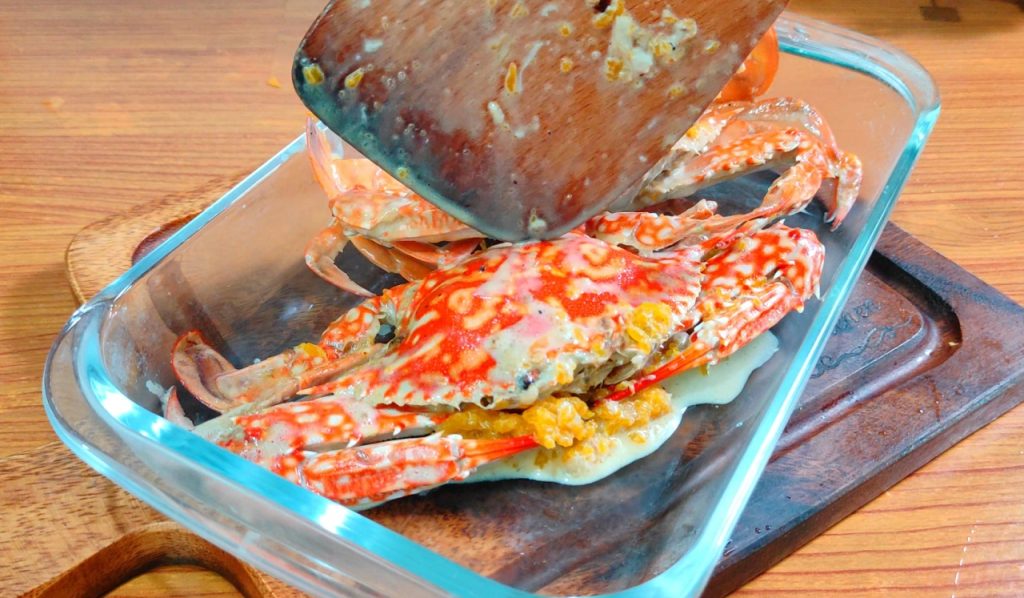
Alimasag vs Alimango
The term alimasag and alimango are often used interchangebly. How do we really know which is which? Let us try to differentiate them briefly.
In english terms, both the alimasag and alimango are called crabs. But the main difference between the two is that alimasag are the larger ones with large pincers and hard, brown shells. Compared to alimango, they can vary in sizes. The crablets you know are actually baby alimango. When you look at their legs, the alimango has “hunky” and large legs while the alimasag has slender ones.
Ginataang Alimasag
Having farm to table might be quite an experience to some, especially to people like me. I live in the province, but I still have many things which I need to experience to complete my probinsyana life.
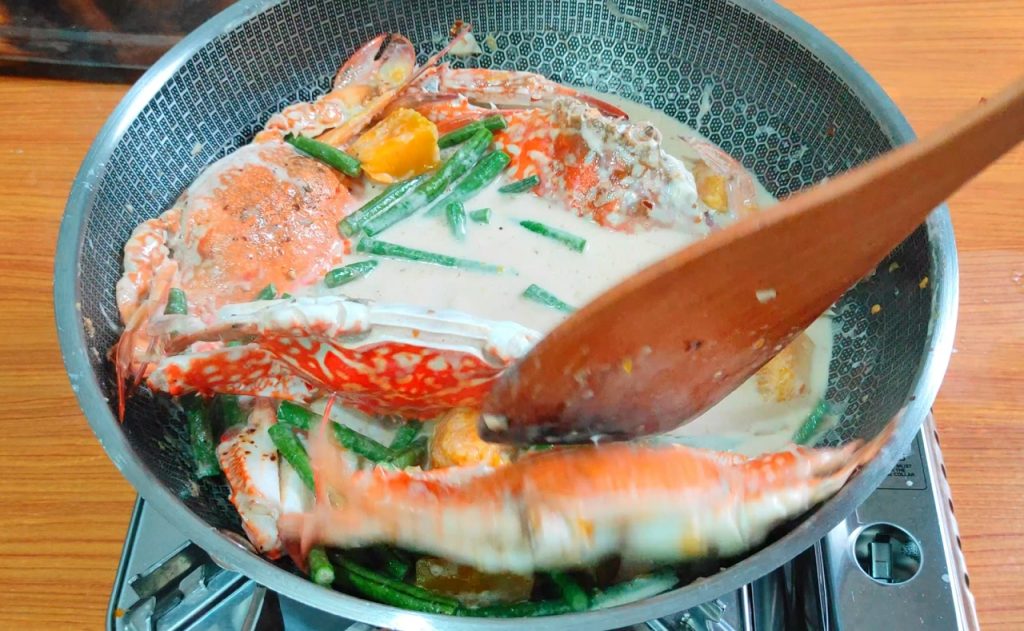
I live in the area near the plains and mountains so the rivers and wetlands is really not my forte. But gladly, I have a tito which is a “batang ilog” ever since. We went to their house to have a visit and he already told me that crab catching is already part of our itinerary.
If you’re an avid fan of my blogs, you’ll know how excited I am when I first planted my own veggies and use them for my daily dishes. What amazes me most with the probinsyana life is that you can get almost all your resources from nature. This is the life my tito has since he lives both near the rivers and plantations. For the next days that we plan to stay in his hut, we are all looking forward to a no-spend challenge where we get all we eat from nature.
Once I saw my tito’s plantations, I knew that my backyard garden is nothing compared to how many trees and plants he is maintaining. My tito knew I was really longing for the crab catching so he put it at the last of our trip. He always told me, “Save the best for last!”. We gathered the fruits and the veggies first, went back to the hut, and got our tools to make the crab catching easier.
Once we got into the river bank, I was a bit scared because a random crab might bite me. My tito owns a drip net where he simply throws in the water and catches a lot of crabs already. It was amazing on how much crabs are in these rivers! So in my tito’s place, crabs are not that expensive to buy.
While farm to table was really exciting, I had a hard time looking at the crabs and decided to just get one of them to turn into a pet. I named her “Delilah” because my tito told me she’s a female crab. I put Delilah on a separate basket and as we walk towards my tito’s hut, DELILAH BIT ME. My finger was bleeding and my heart was shattered. (Good thing they don’t have rabies HAHA). I put Delilah together with the other crabs, jiggle the basket a little so I won’t know who among them was Delilah.
We proceed the farm to table plan and we cooked all the crabs. I don’t know which one of them is Delilah but my tito’s ginataang alimasag was really one of the best. If you can grab some live crabs instead of the chilled ones, get them. The freshness of these crabs hits different when combined with the creamy coconut milk and then eaten with rice.
If you wanna know how to make ginataang alimasag at home, read and follow the quick steps below. Happy cooking!
How to Cook Ginataang Alimasag
Making some delicious and creamy alimasag is both exciting and scary, especially if you deal with live crabs.
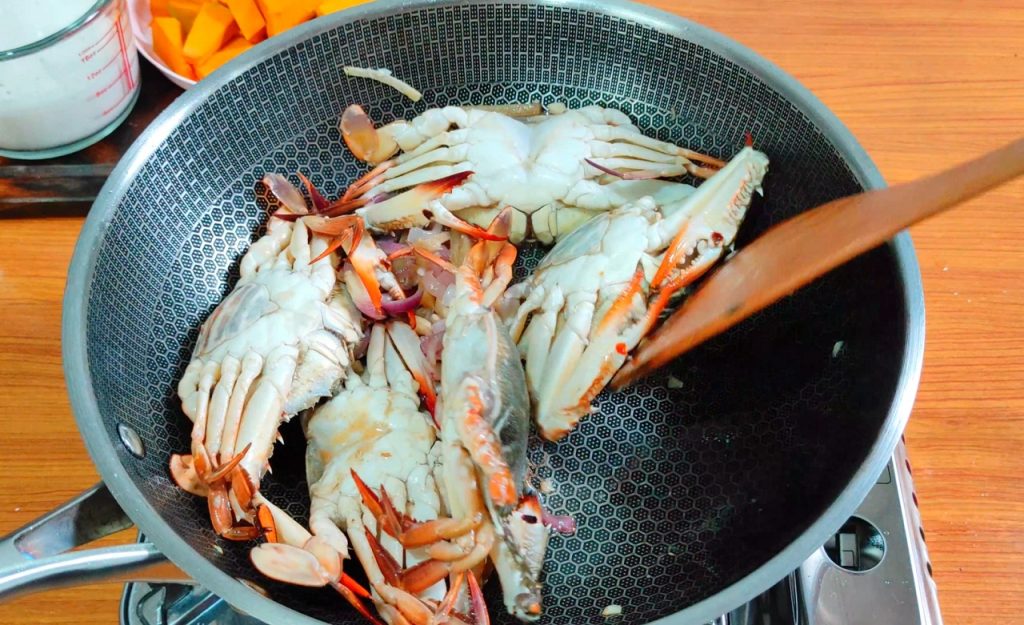
The first step is preparing the live crabs. Of course, we want to do this as humanely as possible. Wash them plainly with water first. My tito suggests putting them in the freezer or in ice water for at least 15 minutes to numb them due to the low temperature. This numbness will slow them down, preventing them to kill you. Then, blanch them in boiling water for 60 seconds. You can easily see their shells turn orange in an instant. The goal of blanching is to subject them into high temperature flashily.
Some people remove the top shell especially with large varieties of crabs. You can do that if you want to. Once the crabs are prepared, saute your aromatics and then saute them all together. Look closely as the shells turn bright orange in color.
Add the seasonings. I used some chili flakes to give it a little fiery heat. Before adding in the coconut milk, lower the heat first as the milk curddles when cooked using the wrong temperature. Add the veggies onto the broth you cook them. You can choose any veggie you want but I used squash and stringbeans. Make sure not to overcook the alimasag as they might become dry.
I really love making papak to this ginataang alimasag. I usually have the gulay as my ulam, then the alimasag is eaten by papak. Yum!
Ginataang Alimasag Recipe in Tagalog
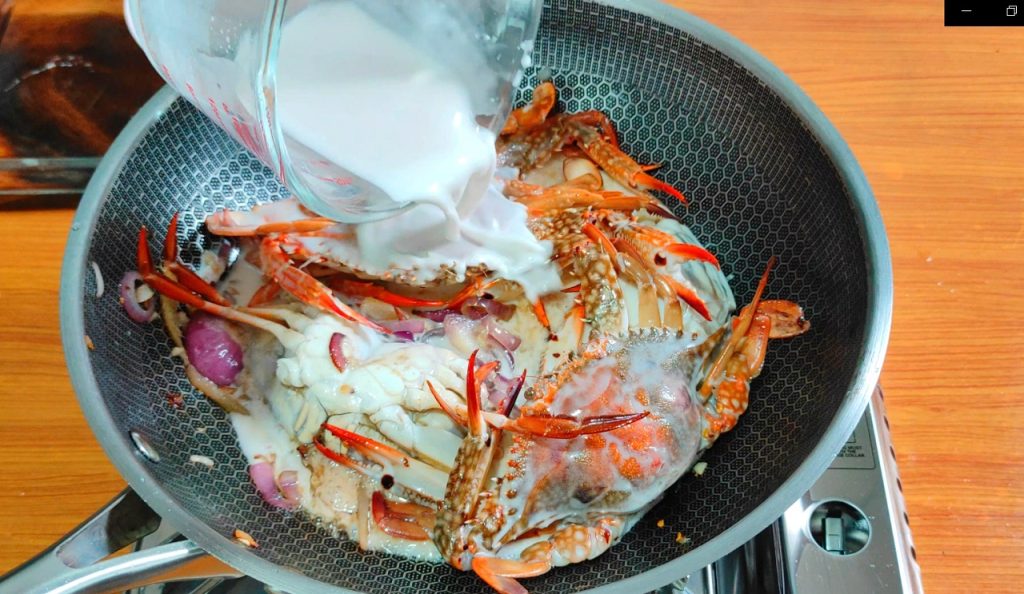
Mga Sangkap:
- 1 kilo alimasag
- 1 litrong gata
- 1 sibuyas (hiniwa)
- 1 luya (hiniwa)
- 3 butil ng bawang (hiniwa ng maliliit)
- chili flakes
- patis
- paminta
- 1 kalabasa (hiniwa ng cubes)
- bugkos ng sitaw
- mantika (pang gisa)
- 1 kutsarang bagoong alamang
Paano Lutuin:
- Magpainit ng mantika sa kawali. Igisa ang sibuyas, luya at bawang ng ilang minuto.
- Ilagay ang mg alimasag at igisa ngg 6 – 8 minuto hanggang maging orange.
- Budburan ito ng chili flakes. Damihan mo ito kung gusto mo ng maanghang. Sunod na ilagay ang gata at hinaan ang apoy. Ilagay ang bagoong alamang at haluin ang mga ito ng konti.
- Ilagay ang kalabasa at sitaw. Ilubog ang mga ito sa gata at tutuin ng 3 – 5 minuto para lumambot. Pwede mong itong lagyan ng konting tubig kung kailangan. Lutuin ang mga ito gamit ang katamtamang apoy hanggang maluto ang mga gulay.
- Kapag luto na ang mga gulay, patayin ang apoy at ilipat ang ginataang alimasag sa serving plate. Papakin ang mga ito o samahan ng mainit na kanin. Yum!
